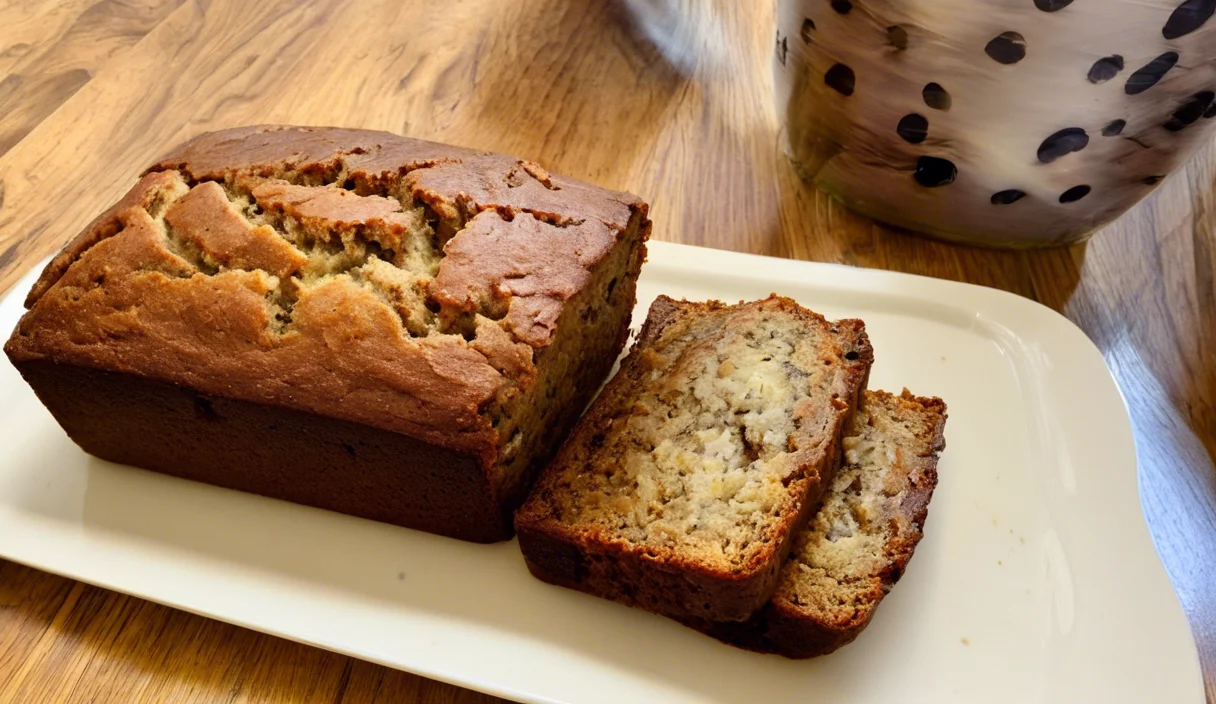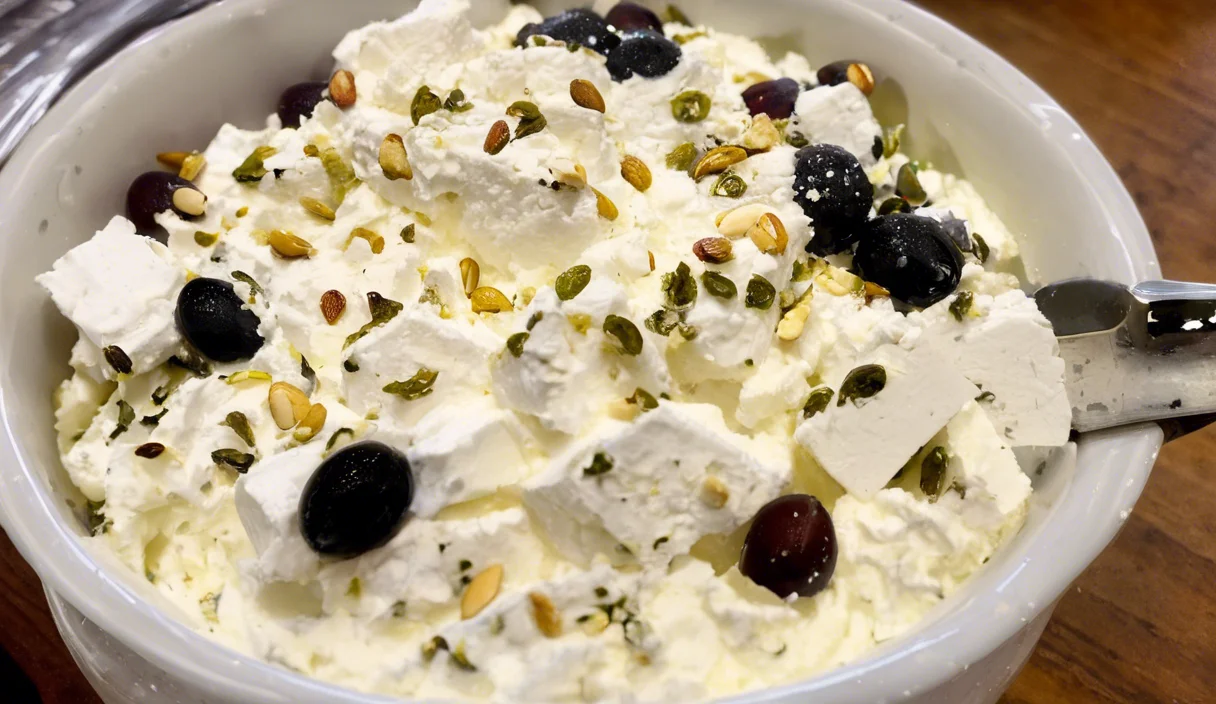If you’re searching for a unique and tasty bread recipe that adds a twist to traditional loaves, this version with cottage cheese is the answer. This flavorful bread incorporates the creamy richness of cottage cheese to create a soft, moist, and slightly tangy bread that can be enjoyed on any occasion. Whether you’re baking it for sandwiches, toast, or simply to accompany a warm bowl of soup, this cheesy loaf offers versatility and a delightful taste experience. In this guide, we’ll explore everything you need to know about this cheese-based bread, including its benefits, step-by-step instructions, various recipe variations, and answers to some frequently asked questions. For even more ways to enjoy cottage cheese, check out these cottage cheese recipes. Let’s dive into the world of this savory baking delight!
What is Cottage Cheese Bread?
This cheese-infused bread is a delicious type made by incorporating cottage cheese into the dough mixture. Unlike regular bread, this type of bread is known for its soft texture, slight tanginess, and richness that comes from the addition of cottage cheese. It has gained popularity among baking enthusiasts for its unique flavor profile and versatility. Whether you are a beginner or a seasoned baker, making this type of bread can be a fun and rewarding experience.
The Origins and Popularity of it in Baking
Cottage cheese has been a staple in kitchens for centuries, known for its creamy texture and mild flavor. When used in bread, cottage cheese adds moisture and a depth of flavor that sets it apart from standard loaves. This type of cheese bread is particularly popular in Europe and North America, where it is enjoyed for breakfast, lunch, and even as a snack. Its versatility makes it perfect for various meals, from savory to slightly sweet versions, making it a beloved choice for many home bakers.
Why Use Cottage Cheese in Bread?
Flavor and Texture Benefits
Incorporating cottage cheese into your dough adds a rich, creamy flavor and enhances the texture, keeping it soft and moist for longer. The tanginess of cottage cheese also gives the bread a distinctive taste that pairs well with various toppings and dishes. The tanginess of cottage cheese enhances the overall flavor profile, giving the bread a distinctive taste that pairs well with a wide range of toppings and dishes.
Unique Taste and Baking Qualities of Cottage Cheese
The unique qualities of this cheesy loaf come from the way it reacts during the baking process. The curds in the cheese create a tender crumb, while the proteins help give the bread structure. Unlike regular bread recipes, cottage cheese bread often has a denser, moist texture that makes it perfect for toasting or making sandwiches. It is a delightful alternative to everyday bread that brings variety and flavor to your baking repertoire.
Essential Ingredients
Standard Ingredients Used in these Recipes
To create this delicious loaf, you’ll need some basic ingredients that are typically found in most bread recipes. However, the star ingredient that makes this bread unique is cottage cheese. So, here’s a quick rundown of what you’ll need:
- Flour: You can use all-purpose flour, whole wheat flour, or a blend of different flours depending on the texture you desire.
- Cottage Cheese: Choose the type of cottage cheese that suits your taste, whether it’s small curd for a smoother texture or large curd for a more textured crumb.
- Yeast: This is essential for the bread to rise and develop a fluffy texture.
- Water or Milk: Used to bind the ingredients together.
- Salt and Sugar: For flavor enhancement.
- Butter or Oil: Adds richness and helps create a soft crumb.
Choosing the Right Type of Cottage Cheese for Baking
When choosing cottage cheese for your bread, you can go for either full-fat or low-fat versions. Full-fat cottage cheese adds a richer flavor and a softer texture, while low-fat cottage cheese offers a lighter alternative. It’s also essential to consider the curd size—small curd cottage cheese blends smoothly into the dough, while large curd provides a more textured crumb.
Different Flour Options
Experimenting with different types of flour can elevate your cottage cheese bread recipe by providing varied textures and flavors. Whole wheat flour offers a denser loaf with a nutty flavor, while rye flour gives a slightly tangy taste. Combining various flours can yield unique textures and flavors, making the bread even more versatile.
Step-by-Step Guide to Making This Dish
Basic Recipe
Ingredients:
- 3 cups of all-purpose flour
- 1 ½ cups of cottage cheese
- 1 tablespoon of active dry yeast
- ½ cup of warm water
- 1 tablespoon of sugar
- 1 teaspoon of salt
- 2 tablespoons of butter, melted
Instructions:
- Prepare the Yeast: Dissolve the yeast and sugar in warm water and let it sit for about 5 minutes until it becomes frothy.
- Mix Ingredients: In a large bowl, combine the flour, salt, cottage cheese, and melted butter. Add the yeast mixture and mix until a dough forms.
- Knead the Dough: Transfer the dough onto a floured surface and knead for 8-10 minutes until smooth and elastic.
- Let the Dough Rise: Place the dough in a greased bowl, cover with a damp cloth, and let it rise in a warm place for 1-2 hours, or until doubled in size.
- Shape and Bake: Punch down the dough, shape it into a loaf, and place it in a greased bread pan. Let it rise for another 30 minutes. Bake in a preheated oven at 375°F (190°C) for 30-35 minutes, or until golden brown.
- Cool and Serve: Let the loaf cool on a wire rack before slicing.
Baking Tips
- Ensure your yeast is fresh and active for a proper rise.
- Kneading the dough well helps develop the gluten, giving the bread structure.
- Giving the dough two rises helps create a lighter, airier loaf.
Popular Variations of Cottage Cheese Bread Recipes
Savory Cottage Cheese and Herb Bread
For a savory twist on this classic recipe, try adding fresh herbs like rosemary, thyme, or basil. If you prefer a different style, consider trying this cottage cheese flatbread recipe for a simple and delicious variation. These herbs add an aromatic flavor that complements the tanginess of the cottage cheese perfectly.
Recipe Variation:
- Add 2 tablespoons of finely chopped fresh herbs to the dough before kneading.
- You can also sprinkle extra herbs on top of the loaf before baking for a burst of flavor.
Cottage Cheese Bread Rolls
If you prefer rolls over a loaf, these cheese-filled rolls are a fantastic option. These rolls are soft, fluffy, and perfect for sliders or small sandwiches.
Recipe Variation:
- Divide the dough into smaller portions after the first rise.
- Shape into rolls, let them rise again, and bake for about 15-20 minutes or until golden.
No-Yeast Cottage Cheese Bread
For a quicker and easier recipe, a no-yeast version of cottage cheese bread is a great alternative. This recipe relies on baking powder for leavening, making it a great option when you’re short on time. For another creative baking idea without using traditional yeast, try these sourdough cinnamon rolls.
Recipe Variation:
- Replace yeast with 1 tablespoon of baking powder.
- Adjust baking time to 25-30 minutes, depending on the loaf size.
Enhancing The Recipe with Different Ingredients
Adding Cheese, Seeds, or Nuts for Texture and Flavor
To add more depth to your loaf, consider incorporating ingredients like shredded cheese, sunflower seeds, or walnuts. For a unique and sweet citrus flavor, you could also experiment with orange creamsicle flavors. These ingredients enhance the flavor and texture of the bread, adding a delicious crunch or creamy bite depending on what you choose to incorporate.
- Cheese: Adding shredded cheddar or parmesan can make the bread more savory.
- Seeds: Sunflower or flax seeds add a crunchy texture.
- Nuts: Chopped walnuts or pecans introduce a nutty flavor and crunch.
Using Different Spices and Seasonings to Elevate the Taste
Spices like garlic powder, onion flakes, or paprika can be mixed into the dough to give the bread a more robust flavor profile. Seasonings are a simple way to customize your bread to suit your taste preferences.
Making it without Yeast
Advantages of No-Yeast Bread
No-yeast cottage cheese bread recipes are perfect for those who prefer a denser texture or need a quicker baking solution. The absence of yeast also makes the bread preparation less time-consuming since there’s no need for a lengthy rise period.
Easy Cottage Cheese Bread Recipe for Quick Baking
Simply substitute baking powder for yeast, mix all the ingredients, and bake immediately. This variation is excellent for those who are new to bread-making or prefer a straightforward, no-fuss recipe.
Techniques for Perfect Cottage Cheese Bread Texture
Achieving a Soft Interior and Crispy Crust
To achieve a perfect texture, focus on the baking temperature and time. A higher initial temperature helps create a crispy crust, while a slightly lower temperature towards the end ensures a soft interior.
Controlling Moisture and Crumb Structure
The moisture content of cottage cheese helps keep the bread soft. However, adjusting the amount of water or milk can fine-tune the crumb structure, resulting in either a denser or lighter loaf depending on your preference.
Best Practices for Kneading and Shaping the Dough
Kneading is crucial in developing gluten, which gives the bread its structure. Ensure to knead until the dough is smooth and elastic. Proper shaping also helps in achieving an even rise and attractive loaf appearance.
Cottage Cheese Bread for Different Occasions
Ideal as a Side for Soups, Stews, and Salads
Cottage cheese bread pairs wonderfully with hearty soups, stews, and fresh salads. Its unique flavor complements these dishes, making it an excellent side choice for a complete meal.
Great for Sandwiches, Toasts, and Snacks
Use cottage cheese bread for sandwiches and toast for a tasty and satisfying option. It holds up well to various fillings and toppings, from classic peanut butter and jam to gourmet avocado and egg.
Pairing with Different Types of Meals
The versatility of this cheese-based loaf allows it to fit into breakfast, lunch, and dinner settings. It can be served as a part of a brunch spread, as a side to a dinner entrée, or simply as a quick snack.
Cottage Cheese Bread Storage and Shelf Life
How to Store Cottage Cheese Bread to Maintain Freshness
To keep this bread fresh, store it in an airtight container at room temperature for up to three days. For more detailed storage tips applicable to various types of bread, you might also find these guidelines on how to store sourdough bread helpful. If you need to keep it longer, consider freezing it.
Tips for Reheating and Serving Leftover Bread
To reheat, wrap the bread in foil and place it in a preheated oven at 350°F (175°C) for 10-15 minutes. This method keeps the bread soft while refreshing the crust.
Can You Freeze Cottage Cheese Bread?
Yes, cottage cheese bread freezes well. Slice it before freezing for convenience, and thaw it at room temperature or reheat directly from frozen.
For a comprehensive guide on storing different types of bread, including sourdough, you can refer to how to store sourdough bread.
(FAQs)
What’s the Difference Between Cottage Cheese Bread and Regular Bread?
Cottage cheese bread differs from regular bread mainly due to the addition of cottage cheese, which gives it a unique flavor, extra moisture, and a softer texture.
What’s the Point of a Cottage Loaf?
A cottage loaf, which is a traditional British bread, features a distinctive round shape with an additional smaller round on top. While this design is purely aesthetic, it certainly offers a beautiful presentation that stands out on any table.
Is Cottage Cheese Good for Baking?
Yes, cottage cheese is excellent for baking as it adds moisture and a slightly tangy flavor to bread, making it soft and flavorful.
Does Cottage Cheese Brown in the Oven?
Cottage cheese itself doesn’t brown significantly in the oven; however, when incorporated into the dough, it contributes to the bread’s overall browning.
What Are Some Popular Toppings for Cottage Cheese Bread?
Popular toppings include butter, honey, jam, or savory options like cheese spreads, avocado, and eggs.
How Long Does Cottage Cheese Bread Stay Fresh?
Cottage cheese bread stays fresh for up to three days at room temperature when stored in an airtight container. It can also be frozen for up to a month for longer storage.
Conclusion
This bread made with cottage cheese is not only versatile but also a delicious alternative to regular loaves, bringing a unique flavor and texture to your baking endeavors. Whether you prefer it as a savory herb loaf, soft rolls, or even a quick no-yeast option, this cheesy bread is sure to delight every time. So, why not experiment with different variations and make this delightful bread a staple in your kitchen?





